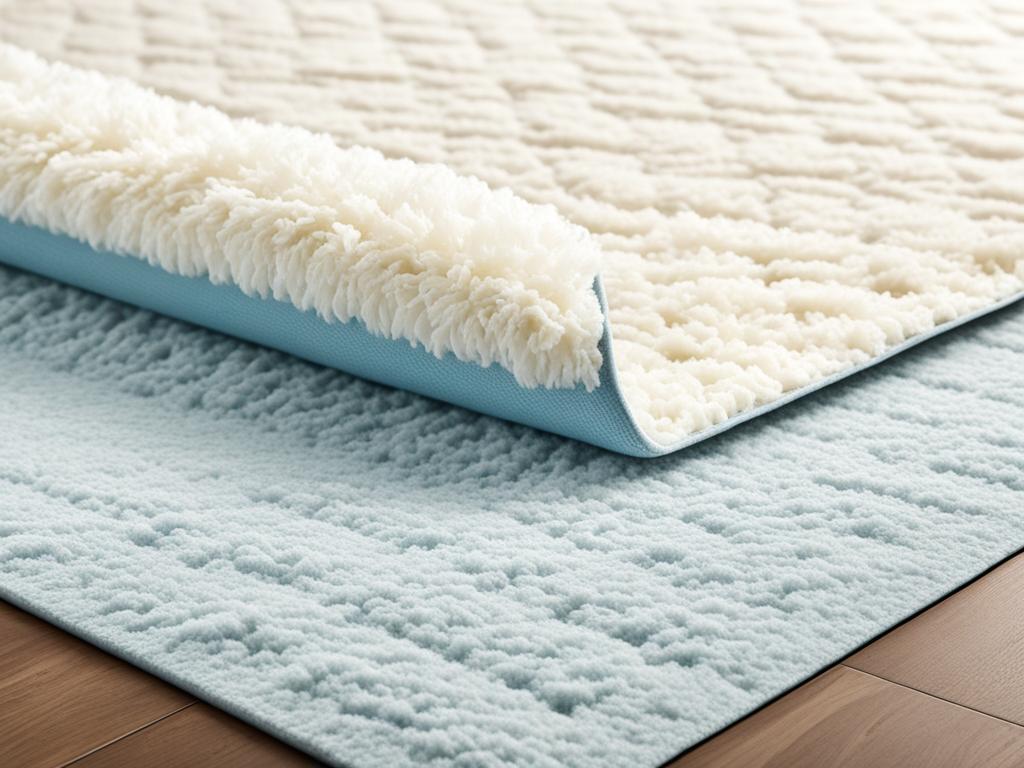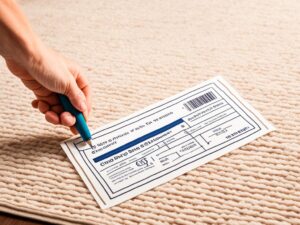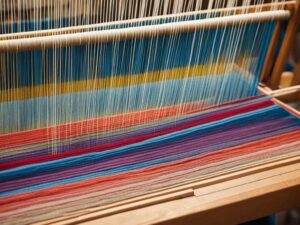Are you wondering what thickness rug pad you need to enhance the comfort and longevity of your area rugs? Choosing the right rug pad thickness is essential to ensure optimal cushioning, floor protection, and overall performance. In this guide, we will explore the benefits of thick rug pads, when to use them, when not to use them, and how to choose the ideal rug pad thickness for your specific needs.
Key Takeaways:
- A thick rug pad provides extra cushioning for enhanced comfort and better floor protection.
- It is recommended to use a thick rug pad for heavy furniture, thicker rugs, and households with children or noise complaints.
- Thicker rug pads are also suitable for use on heated floors or in hot areas.
- For flat weave or smaller rugs, a thinner rug pad with a natural grip is preferable to prevent slipping.
- When choosing the right rug pad thickness, consider factors like rug type, flooring type, cushioning, non-slip grip, eco-friendliness, and price.
Now that you understand the importance of rug pad thickness, let’s dive deeper into the benefits of thick rug pads and when to use them.
Benefits of Thick Rug Pads
Thick rug pads offer a range of benefits that enhance both the comfort and functionality of your rugs. These high-quality pads provide:
- Extra Cushioning: Thick rug pads give your rugs a plush and luxurious feel, adding an extra layer of comfort when walking or sitting on them. The additional cushioning creates a soft and welcoming atmosphere in your home.
- Better Floor Protection: With their substantial thickness, these rug pads effectively prevent your rugs from sliding or shifting. They provide a stable foundation, reducing the risk of falls and minimizing scratches on your hardwood floors.
- More Soundproofing: Thick rug pads have a sound-absorbing quality that helps minimize noise in your home. They absorb the sound of footsteps and reduce the impact of falling objects, creating a quieter and more serene living environment.
- Effective Insulation: These rug pads serve as a barrier between your rugs and the floor, offering insulation properties. In colder months, they help retain heat and prevent heat loss, keeping your feet warm. In warmer months, they resist heat transfer, ensuring a cooler floor surface.
- Layered Look: Thick rug pads create a visually appealing layered look. They add depth and dimension to your rugs, making them appear more substantial and luxurious. This layered effect enhances the overall aesthetic appeal of your room.
Thick rug pads are particularly recommended for areas with heavy foot traffic, homes with children or noise concerns, and rooms with heated floors or in hot climates. They provide the perfect combination of comfort, protection, soundproofing, insulation, and aesthetics, elevating the functionality and style of your rugs.
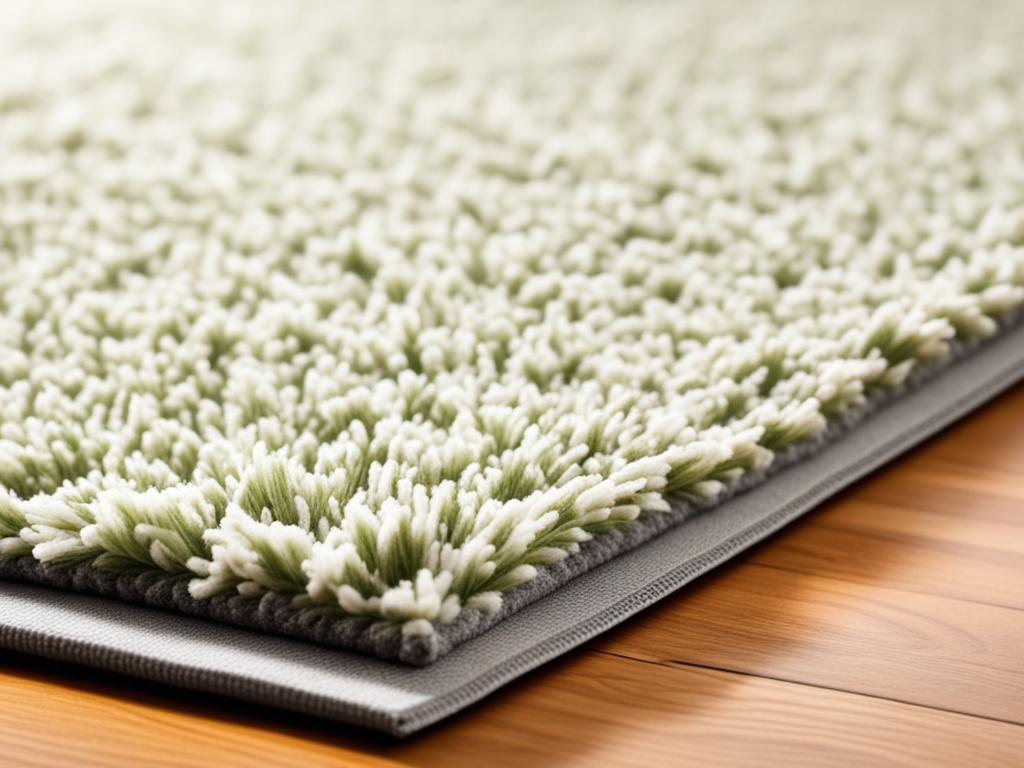
When to Use a Thick Rug Pad
When it comes to choosing a rug pad, thickness plays a crucial role in determining its performance and suitability for different situations. A thick rug pad offers numerous benefits and is recommended for specific scenarios where extra cushioning, floor protection, soundproofing, and heat resistance are required.
Situations for Using a Thick Rug Pad
Here are the situations where using a thick rug pad is highly recommended:
- Heavy Furniture: If you have heavy furniture in your space, such as large sofas or dining tables, a thick rug pad is essential. It helps to prevent the furniture from sinking into the rug and causing damage to both the rug and the underlying hardwood floors.
- Thicker Rugs: Persian rugs, Oriental rugs, and other thicker rugs can greatly benefit from a thick rug pad. The plush and sustainable 100% felt rug pad elevates these rugs, providing additional lift and protection while enhancing their durability.
- Households with Children or Noise Complaints: As any parent knows, children can be quite energetic, resulting in noisy footsteps and potential noise complaints from neighbors. Using a thick rug pad helps absorb footfall noise and minimize sound transmission, making it an excellent choice for households with children or in areas where noise complaints are a concern.
- Heated Floors or Hot Areas: In instances where you have heated floors or live in hot areas, a thick rug pad is ideal. It resists heat and provides thermal resistance, ensuring that the rug does not become overly warm or affect the overall temperature of the room.
By using a thick rug pad in these situations, you can enhance the longevity of your rugs, protect your floors, and create a more comfortable living environment.
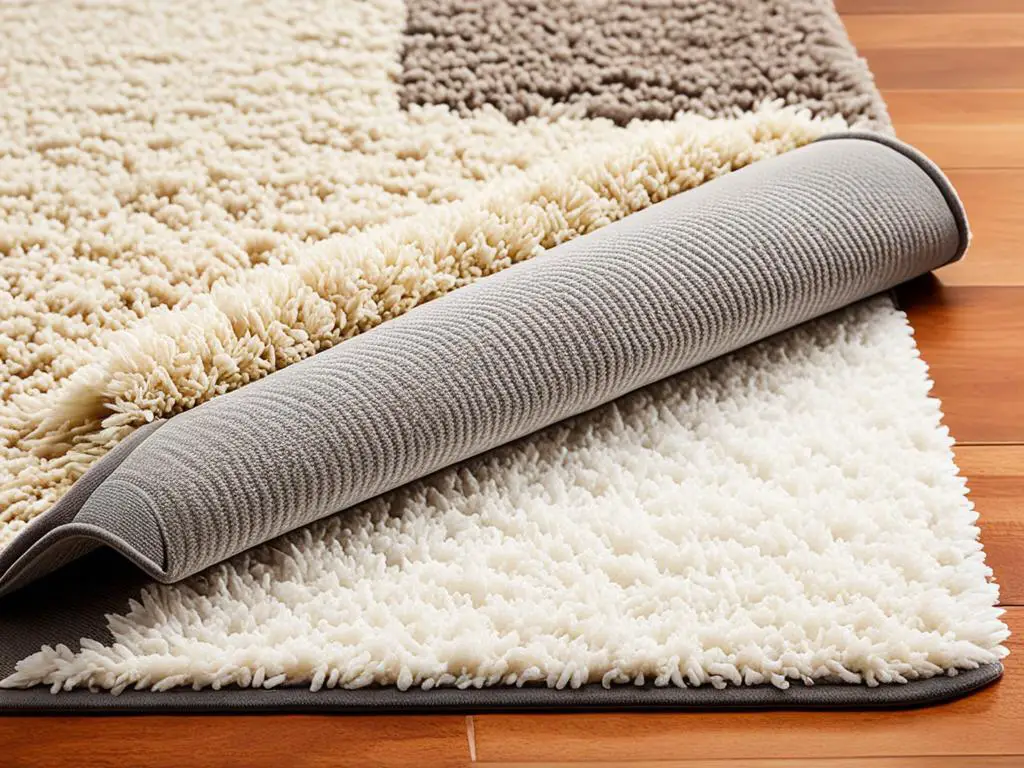
| Benefits of Using a Thick Rug Pad | |
|---|---|
| Extra Cushioning | A thick rug pad provides additional cushioning, making your rugs feel more plush and comfortable underfoot. |
| Better Floor Protection | A thick rug pad helps prevent sliding and scratching, keeping both your rug and floor in pristine condition. |
| More Soundproofing | Thick rug pads absorb noise, reducing footfall sounds and minimizing sound transmission to neighboring rooms or apartments. |
| Improved Insulation | Thick rug pads provide insulation, helping regulate room temperature and preventing heat loss during colder months. |
| Layered Look | The extra thickness of a rug pad creates a layered look, enhancing the visual appeal of your room decor. |
When Not to Use a Thick Rug Pad
Thicker rug pads are typically recommended for their extra cushioning and floor protection. However, there are certain cases where using a thick rug pad may not be the best option. For flat weave rugs or smaller rugs, a thinner rug pad with a natural grip is preferable to prevent tripping hazards and interference with the rug’s natural grip. In such situations, a low-profile felt-rubber rug pad offers the perfect solution.
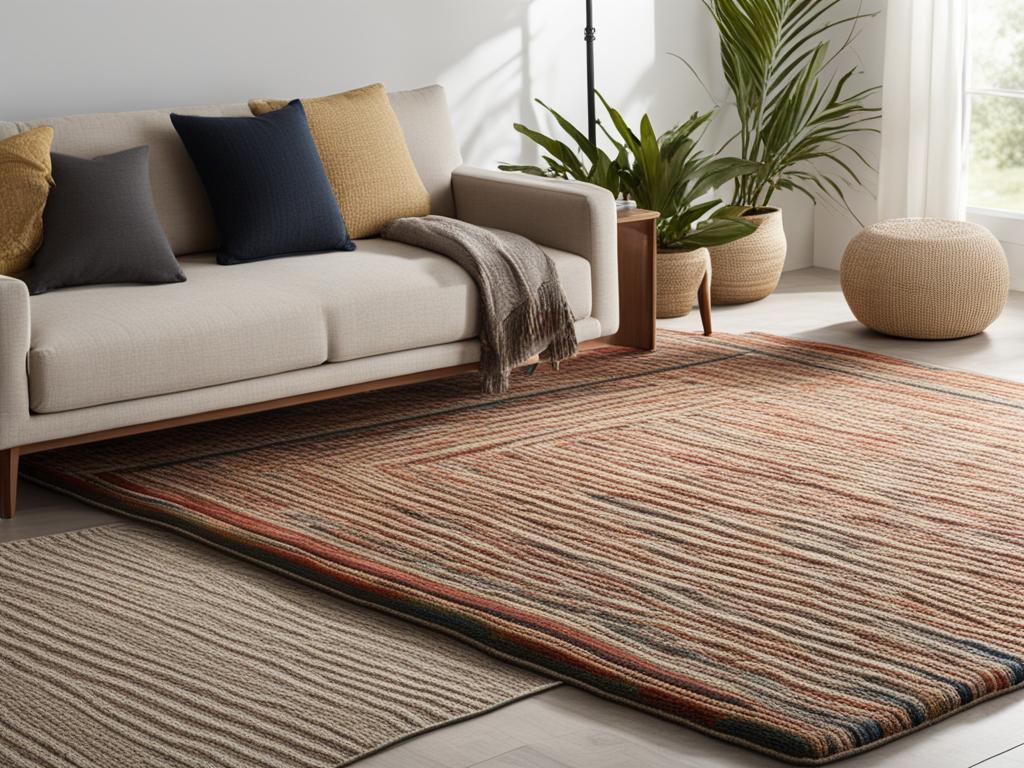
A low-profile felt-rubber rug pad provides a natural grip that helps the rug stay in place without adding excessive thickness. This type of rug pad is ideal for flat weave rugs or smaller rugs, as it ensures floor protection and prevents slips without compromising on safety. Additionally, low-profile felt-rubber rug pads are suitable for medium-sized or larger rugs in high-traffic areas, offering the perfect balance of grip and cushioning.
Choosing the right rug pad is essential to enhance the longevity and functionality of your rugs. While thick rug pads have their benefits, it’s important to consider the specific needs of your rugs and the type of flooring you have. By opting for a thinner rug pad with a natural grip, like a low-profile felt-rubber rug pad, you can ensure the perfect combination of safety, comfort, and floor protection.
Choosing the Right Rug Pad Thickness
When it comes to selecting a rug pad for your area rugs, choosing the right thickness is essential. The thickness of the rug pad depends on the size and type of rug you have, as well as your specific needs and preferences.
For thin or flatweave rugs, such as kilims or dhurries, a 1/8 or 1/4-inch rug pad is recommended. These thinner pads provide grip and prevent slipping, as well as protect your rug from bunching or wrinkling. They add a slight cushioning without compromising the flat and sleek look of the rug.
On the other hand, medium to heavy rugs, like plush or shag rugs, benefit from a slightly thicker pad. A 1/4 or 3/8-inch rug pad offers the perfect balance of cushioning and floor protection. It helps to absorb impact when walking on the rug, making it more comfortable to walk or stand on.
For the thickest rugs, such as hand-knotted or high-pile rugs, it’s important not to go for the thickest pad available. Choosing a rug pad that matches the thickness of these rugs can result in tripping hazards and discomfort. Instead, opt for a felt rug pad with a thickness of 1/2, 3/8, or 1/4 inch. These thicknesses provide ample cushioning while maintaining safety and stability.
When selecting a felt rug pad, it’s important to consider the thickness that suits your specific rug and preferences. While a thicker pad may offer more cushioning, it might not be suitable for every rug. Take into account the overall look you want to achieve, the amount of foot traffic in the area, and any special considerations like floor type or heating systems.
By carefully selecting the right rug pad thickness, you can ensure maximum comfort, floor protection, and longevity for your area rugs. Whether you have a thin flatweave or a thick luxurious rug, find the perfect rug pad that meets your needs and enhances your rug’s performance.
Factors to Consider When Choosing a Rug Pad
When selecting a rug pad, several factors should be taken into consideration to ensure the perfect fit for your rug and flooring. By paying attention to these key factors, you can make an informed decision that meets your specific needs. Let’s explore the essential considerations when choosing a rug pad:
Rug Type
The type of rug you have plays a vital role in selecting the right rug pad. Consider factors such as the material, loop or pile, and thickness of your rug. Different rug types have specific requirements that should be fulfilled by using an appropriate rug pad.
Flooring Type
The type of flooring you have is another crucial factor to consider when choosing a rug pad. The flooring type will determine the appropriate thickness of the rug pad required. For example, hardwood floors may require a different rug pad thickness compared to carpeted floors. Ensure that the rug pad is compatible with your flooring to avoid any damage or slipping.
Cushioning
Cushioning is an essential factor to consider, especially if you are looking for additional comfort underfoot. Determine the level of cushioning you desire and select a rug pad that provides the desired level of softness. Thicker rug pads generally offer more cushioning, providing a plusher feel.
Non-Slip Grip
Preventing slipping and sliding of your rug is crucial to maintain an orderly and safe space. Look for a rug pad that offers a non-slip grip to keep your rug securely in place. This feature is particularly important if you have children or pets who may be prone to accidents.
Eco-Friendly Materials
If you prioritize sustainability and environmentally friendly choices, consider opting for an eco-friendly rug pad. Look for materials such as natural rubber or felt that are derived from renewable sources. Choosing an eco-friendly rug pad supports a greener lifestyle and reduces the environmental impact.
Price
Price is an important consideration for many individuals when selecting a rug pad. Determine your budget range and look for rug pad options that meet your financial requirements. Keep in mind that while price is a significant factor, it should not be the sole determining factor. It is essential to strike a balance between quality and affordability.
By considering these factors, including rug type, flooring type, rug thickness, cushioning, non-slip grip, eco-friendly materials, and price, you can make a well-informed decision when selecting a rug pad. Taking these factors into account will help ensure that your rug pad provides optimal support, protection, and aesthetics for your rug and flooring, enhancing the overall longevity and enjoyment of your space.
Conclusion
In conclusion, the thickness of a rug pad plays a crucial role in enhancing the comfort and longevity of your area rugs while protecting your floors. By choosing the right rug pad thickness, you can ensure optimal comfort, floor protection, soundproofing, insulation, and a beautiful aesthetic appeal.
When selecting a rug pad, consider factors such as the size of your rug and the specific needs of your space. Thicker rug pads are recommended for heavy furniture, thicker rugs, households with children or noise complaints, and heated floors or hot areas. On the other hand, thinner rug pads with a natural grip are preferable for flat weave rugs or smaller rugs to prevent slipping.
Be sure to also consider other important factors like cushioning, non-slip grip, eco-friendliness, and price when making your rug pad decision. By taking these factors into account and choosing the appropriate rug pad thickness, you can create a comfortable and safe environment for your rugs and floors.
Remember, the right rug pad thickness not only provides added comfort and protection but also enhances the overall performance and lifespan of your rugs. So, take the time to make an informed choice and enjoy the benefits of a well-selected rug pad thickness.
